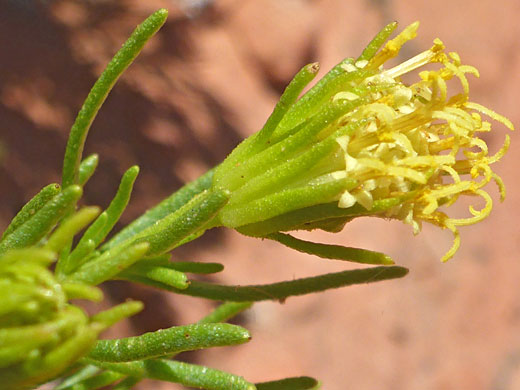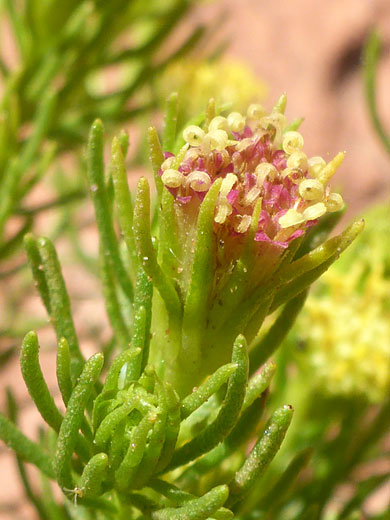Peucephyllum Schottii, Schott's Pygmycedar
Plants > Wildflowers > Asteraceae > Peucephyllum Schottii
Common name:
Schott's pygmycedar
Family:
Scientific name:
Peucephyllum schottii
Main flower color:
Range:
The Mojave and Sonoran deserts - California, Nevada, Arizona, far southwest Utah
Height:
Up to 9 feet
Habitat:
Desert plains, washes and slopes, on varied substrates, from sea level to 4,500 feet
Leaves:
Alternate, stalkless, usually less than 1 inch long
Season:
December to June
Peucephyllum schottii, the only member of the genus, resembles a miniature conifer, hence its common name of pygmy cedar; the foliage is evergreen, the leaves short, narrow, linear or thread-like, cylindrical in cross-section; like pine needles. Leaves are hairless, their surfaces gland-dotted, and usually entire; just occasionally with one or two side lobes. Plants are shrubs, typically a rounded clump several feet tall, with much-branched stems, woody at the base.
Flowerheads are solitary, at the tip of the branches, they contain disc florets only, between 12 and 21, colored pale yellow, often purplish at the tip, around the five triangular corolla lobes. Below the florets are up to 18 leaf-like phyllaries, usually in two distinct rows.
Flowerheads are solitary, at the tip of the branches, they contain disc florets only, between 12 and 21, colored pale yellow, often purplish at the tip, around the five triangular corolla lobes. Below the florets are up to 18 leaf-like phyllaries, usually in two distinct rows.
All Contents © Copyright The American Southwest | Comments and Questions | Contribute | Site Map




